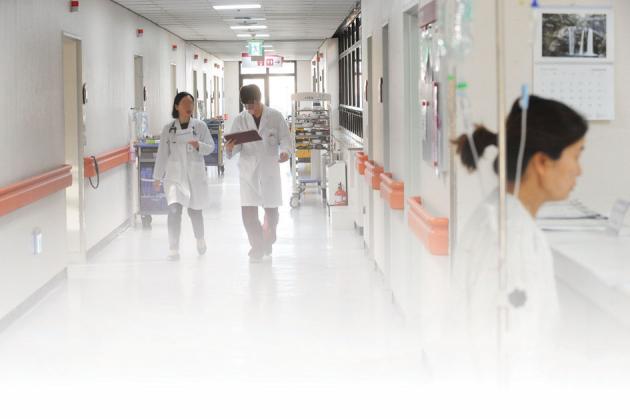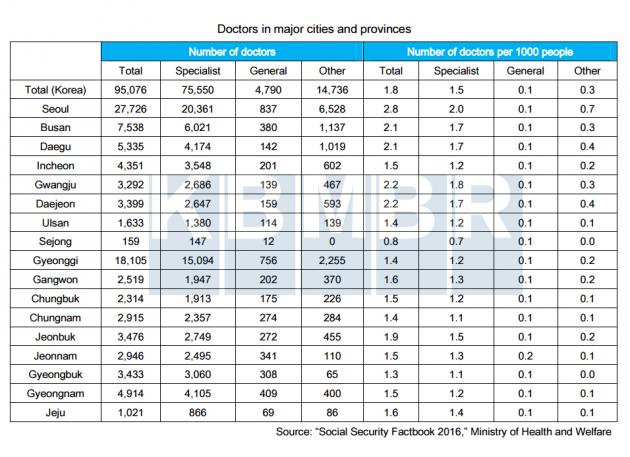More than half of Korean doctors are in Seoul and neighboring Gyeonggi Province, causing a severe imbalance of medical service with the rest of the country, government statistics showed Tuesday.
Moreover, the excessive concentration of doctors and medical facilities in the capital area has remained little changed over the past two decades, according to a factbook on social security released by the Ministry of Health and Welfare.
So much so that the World Health Organization pointed to this problem and offered solutions in its “review of Korean health financing system” in 2010 – to no avail.

Last year, 52.8 percent of doctors were working in the capital city and its neighboring province. As the result of the “medical centralization,” 63.7 percent of interns and resident doctors are also undergoing training at big-name hospitals in Seoul and its vicinity. Seven other provinces and 15 other large cities share the remaining doctors, unevenly at that.
For instance, Sejong City which houses the second government office complex had only 159 doctors or 0.8 doctors per 1,000 people. In comparison, the number of physicians per population of 1,000 in Seoul was 2.8, and that of Gyeonggi Province was of 1.4.

The uneven distribution is a problem in accessing health care in both metropolitan and rural areas. For instance, pregnant women living in Sejong go to Seoul because the administrative city lacks in childbearing facilities, while citizens of Seoul have to deal with overcrowding in hospitals.
What exacerbates the regional imbalance is the absolute shortage of doctors in this country, industry watchers say. Korea has 2.2 physicians per population of 1,000, far below the average 3.2 doctors in the member nations of the Organization for Economic Cooperation and Development, and ranked almost at the bottom along with Mexico and Poland.

